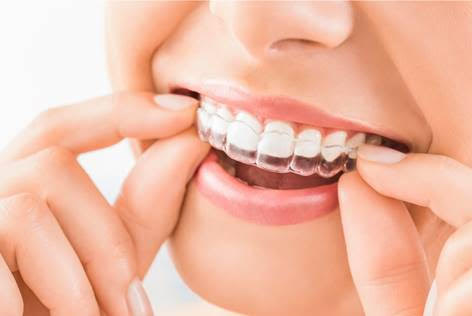

ORTHODONTICS
Straightening of malpositioned teeth
Orthodontic treatment involves the design, application and control of corrective "appliances" such as braces, retainers, fixed, removable appliances and habit breaking appliances etc., to achieve facial balance, proper occlusion (bite), teeth alignment and perfect smile.
Why is orthodontic treatment important?
Crooked and crowded teeth are hard to clean and maintain, making them prime targets for tooth decay, gum disease and other health concerns. Poor jaw and/or tooth alignment can put undo stress on teeth and their supporting tissues, causing teeth to chip, crack, wear excessively, or even loosen. Some malocclusions, or bad bites, may contribute to chronic headaches, face or neck pain.
Who needs braces?
Most everyone can benefit from orthodontic treatment. Anyone who wants to improve his or her smile and/or bite should consult for orthodontic treatment.
When is the right time to start orthodontic treatment?
The American Association of Orthodontists recommends that children have an orthodontic evaluation by age 7, and adults can be treated at any age.
What are the benefits of orthodontic treatment?
There are many advantages to early orthodontic treatment:
- Prevent and intercept orthodontic problems
- Improve self-confidence and self-image
- Guide facial growth for a more attractive profile and Improve facial balance
- Improve chances of avoiding extraction and surgical procedures
- Guide eruption of permanent teeth, regulating space where needed.
- Eliminate adverse habits, such as thumb sucking and tongue thrusting
- Avoid fracture of protruding teeth.
- Prevent impaction of cuspids with early expansion.
- Improve chances of good speech development.
- Improve oral health, improve function and alignment of the teeth and jaws
- A more attractive smile
- Improve the force distribution and wear patterns of the teeth
- May improve speech pattern, swallowing and lip closure
What causes orthodontic problems?
Most types of problems are due to a combination of inherited traits and environmental influences. Genetics, determine facial pattern, tooth size and space between teeth. Environmental influences can include habits (such as thumb sucking), tooth decay, trauma, diet, etc.
How long does treatment usually take?
Since everyone is different, some people may respond to treatment more quickly than others do. Generally, the active treatment time (wearing braces) ranges from one to two years depending on the complexity of the case. Are there less noticeable braces? Yes, today's braces are significantly smaller and more efficient. In addition to metal, clear and colored braces are now available.


What are some commonly used orthodontic appliances? RPE (rapid palatal expander)
this fixed appliance is used to widen the upper jaw, creating more room for crowed teeth, correcting a cross-bite and improving the width of the smile.
Quad Helix
this fixed appliance is used to correct cross-bites, rotate molars, improve smile width, and/or provide anchorage.
Bite Plate
this fixed or removable appliance is used to correct a deep over-bite.
Nance appliance
this fixed appliance is used for anchorage control and is sometimes used as a fixed upper retainer.
Retainer
this type of removable appliance is commonly used after the braces are removed to maintain and stabilize the results.
LLHA (lower lingual holding arch)
this fixed appliance is used to hold space during the transition of the dentition from the primary teeth to the adult teeth.
How can I be sure I am getting the best results?
Successful orthodontic treatment is a two-way street, requiring a consistent and cooperative effort from both the dentist and the patient. Wearing the prescribed appliances, properly cleaning and maintaining your teeth, and regularly visiting the dentist, will help ensure great results and a healthy, beautiful smile.
- Prevent and intercept orthodontic problems
- Improve self-confidence and self-image
- Guide facial growth for a more attractive profile and Improve facial balance
- Improve chances of avoiding extraction and surgical procedures
- Guide eruption of permanent teeth, regulating space where needed.
- Eliminate adverse habits, such as thumb sucking and tongue thrusting
- Avoid fracture of protruding teeth.
- Prevent impaction of cuspids with early expansion.
- Improve chances of good speech development.
- Improve oral health, improve function and alignment of the teeth and jaws
- A more attractive smile
- Improve the force distribution and wear patterns of the teeth
- May improve speech pattern, swallowing and lip closure
What causes orthodontic problems?
Most types of problems are due to a combination of inherited traits and environmental influences. Genetics, determine facial pattern, tooth size and space between teeth. Environmental influences can include habits (such as thumb sucking), tooth decay, trauma, diet, etc.
How long does treatment usually take?
Since everyone is different, some people may respond to treatment more quickly than others do. Generally, the active treatment time (wearing braces) ranges from one to two years depending on the complexity of the case. Are there less noticeable braces? Yes, today's braces are significantly smaller and more efficient. In addition to metal, clear and colored braces are now available.


What are Orthodontic Aligners / Invisalign System?
The Invisalign System or other similar aligners use a series of clear, removable plastic trays (aligners) that fit over teeth. Aligners are custom-made and changed every 10-14 days to gradually move teeth into the desired position. These are virtually invisible as compared to the conventional orthodontic braces.
These are highly efficient and suitable for most cases from mild to moderate complexity. These can be removed for normal brushing and flossing, making it easier to maintain a good level of oral hygiene throughout the course of treatment.
Patient compliance is better and research shows that because aligners are virtually invisible, there is a high level of patient acceptance with Invisalign treatment. However, levels of compliance with elastic wear can vary from patient to patient being treated with aligners.
